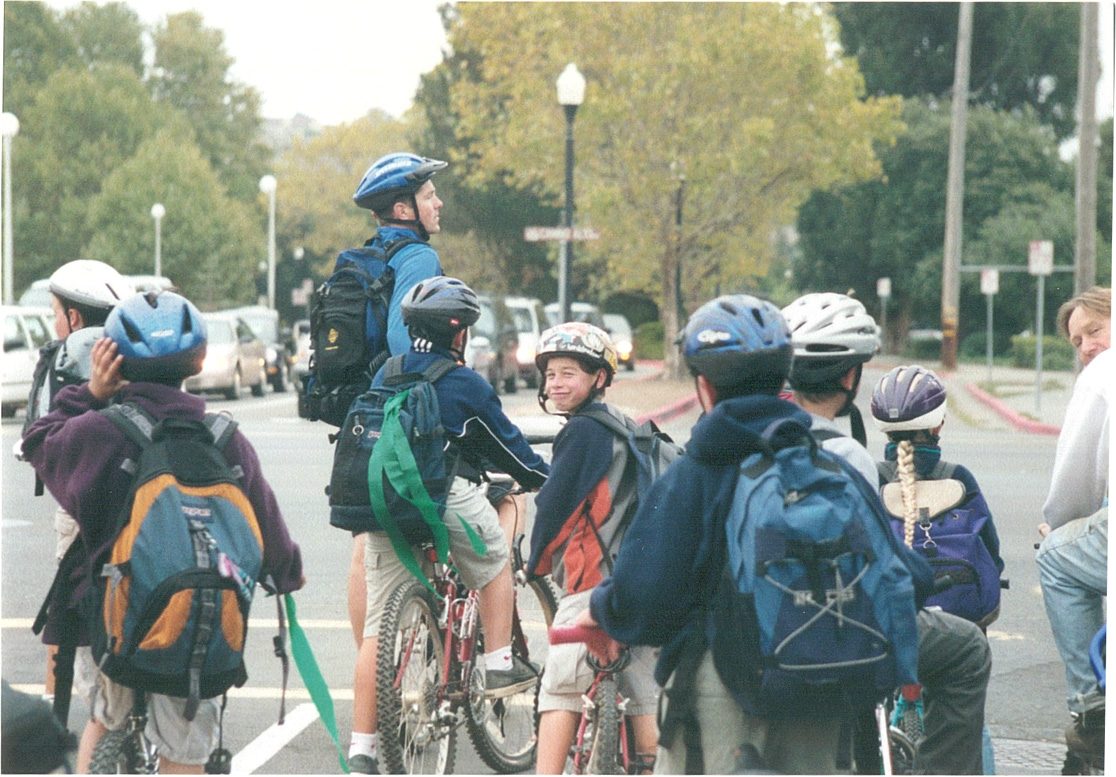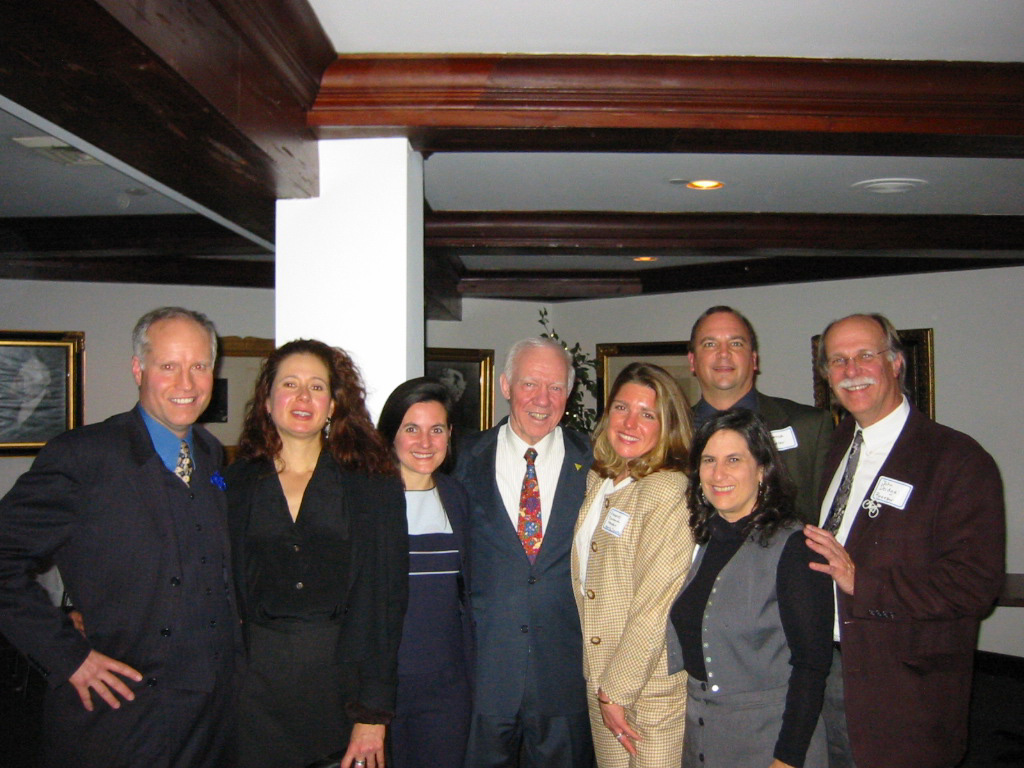This is the first in a series of blog posts highlighting pivotal moments in the history of the Safe Routes to School movement.
Dear Deb and Wendi: Thank you so much for creating the Safe Routes to School program sixteen years ago. It has really made a difference at Kent Middle School. I now walk to school every day I have a chance to. Sixty percent of our school now travels green, and it is truly because of the commitment you two have made. – Kent Middle School student, 2015
Ten years ago, today’s seventh graders were two years old. Today, they are the next generation of activists. Youth like the students at Marin County’s Kent Middle School have grown up with the legacy of Safe Routes to School, a program that was launched in their own backyard. For these students, and many students like them all across the country, walking and bicycling to school is, once again, the new normal.
However, their story could have turned out much differently. Between 1969 and 2009, rates of walking and bicycling to school plummeted, from approximately 50 percent in 1969 to just 13 percent in 2009. As Americans became more dependent on the automobile, parents began driving their children to school in large numbers, even for very short distances of just one-quarter or one-half mile. The decline in walking and bicycling correlated with soaring rates of childhood obesity and inactivity.
In 1999, in Fairfax, California, Deb Hubsmith and Wendi Kallins were part of the same coalition working to pass a sales tax proposal for funding train service between Sonoma and Marin County. In conversations as they carpooled to coalition meetings, Hubsmith and Kallins discovered that they were both interested in working on school-based programs that would provide opportunities for children to walk and bicycling to school. Kallins, who was working as a rail service advocate, hired Hubsmith to develop presentations for schools to educate students about not only the train, but other non-motorized transportation options. Hubsmith and Kallins reasoned that by teaching students about their transportation options, they would also be able to reach more parents.
“Deb put together solar powered bicycle with a BOB trailer to carry booklets and presentation materials around. Remember, this was before electric bikes had a real market. Deb was a go-getter from the very beginning,” said Kallins.
Soon, Kallins and Hubsmith were able to partner with Anne Seeley from the California Department of Health Services to develop what would become the first early Safe Routes to School pilot programs in Marin County. Then, in 1999, California became the first state in the country to launch a state Safe Routes to School program. The program redirected one-third of federal safety funds to Safe Routes to School and began providing $20 million per year for new bike lanes, pathways, crossings and sidewalks to help kids walk and bicycle to schools throughout the state.
An early bike train in Marin County, California
It was at this time that Hubsmith met the late Congressman Jim Oberstar (D-MN), who was alarmed at the rising rates of childhood obesity and the decline in walking and bicycling to school. Hubsmith provided Congressman Oberstar with more information about Safe Routes to School in California and in Europe, and in the year 2000, at Congressman Oberstar’s urging, the National Highway Traffic Safety Administration provided $50,000 each for federal Safe Routes to School pilot programs in Marin County and Arlington, Massachusetts.
Marin County advocates with Congressman Oberstar
The pilot program in Marin County started with four schools but quickly grew to nine schools as Hubsmith worked tirelessly to ensure that the program achieved real, tangible results. Rates of walking and bicycling to school increased from 21 percent to 38 percent in the first two years of the program. Meanwhile, Hubsmith continued to provide information and updates to Congressman Oberstar and to collaborate with other leaders in the bicycle and walking advocacy movements to form a coalition to advocate for funding for bicycling, walking, and Safe Routes to School in the federal transportation bill.
“Deb has that rare combination of a high-energy personality, incredible attention to detail, and the ability to see the big picture that makes her a true visionary. She’s also a phenomenal fundraiser. She is relentless and doesn’t take no for an answer,” said Kallins.
Hubsmith’s dedication to advancing Safe Routes to School nationally paid off as she worked closely with Congressman Oberstar’s staff in 2002 and 2003 to write the federal legislation for Safe Routes to School in the 2005 SAFETEA-LU bill. With the passage SAFETEA-LU, Safe Routes to School became an established federally-funded program in all 50 states and Washington, DC. That same year, Hubsmith founded the Safe Routes Partnership.
In the decade since the birth of Safe Routes to School nationally, our nation has undergone profound changes in the way we think about the intersection of health and physical activity, of transportation and community design, and of equity and active transportation. Today, we are working toward a shared vision with a broad and diverse set of champions for healthy, active communities. Today, our commitment to advancing Safe Routes to School is tightly and inseparably woven with our work to advance Complete Streets, shared use policies, and healthy community design.
Over the past ten years, Safe Routes to School programs have impacted more than 14,000 schools in all 50 states. And the demand continues to grow, especially low-income communities, communities of color, and rural communities, where it is hard for anyone to safely and conveniently walk, bicycle, or get physical activity. These are the communities where the next generation of supportive policies and programs are needed most.
As we move forward in celebrating 10 years of Safe Routes to School and the Safe Routes Partnership’s 10th anniversary, we want to hear from you about the changes your community has experienced over the past decade. Between now and the National Conference in April 2016, we’ll be highlighting pivotal founder moments from the past 10 year. Can you identify a pivotal moment that strengthened your city's commitment to walking, bicycling and healthy community design? How are things different for a child entering school in your city or state today compared to 10 years ago? Share your stories and reflections with us here.



